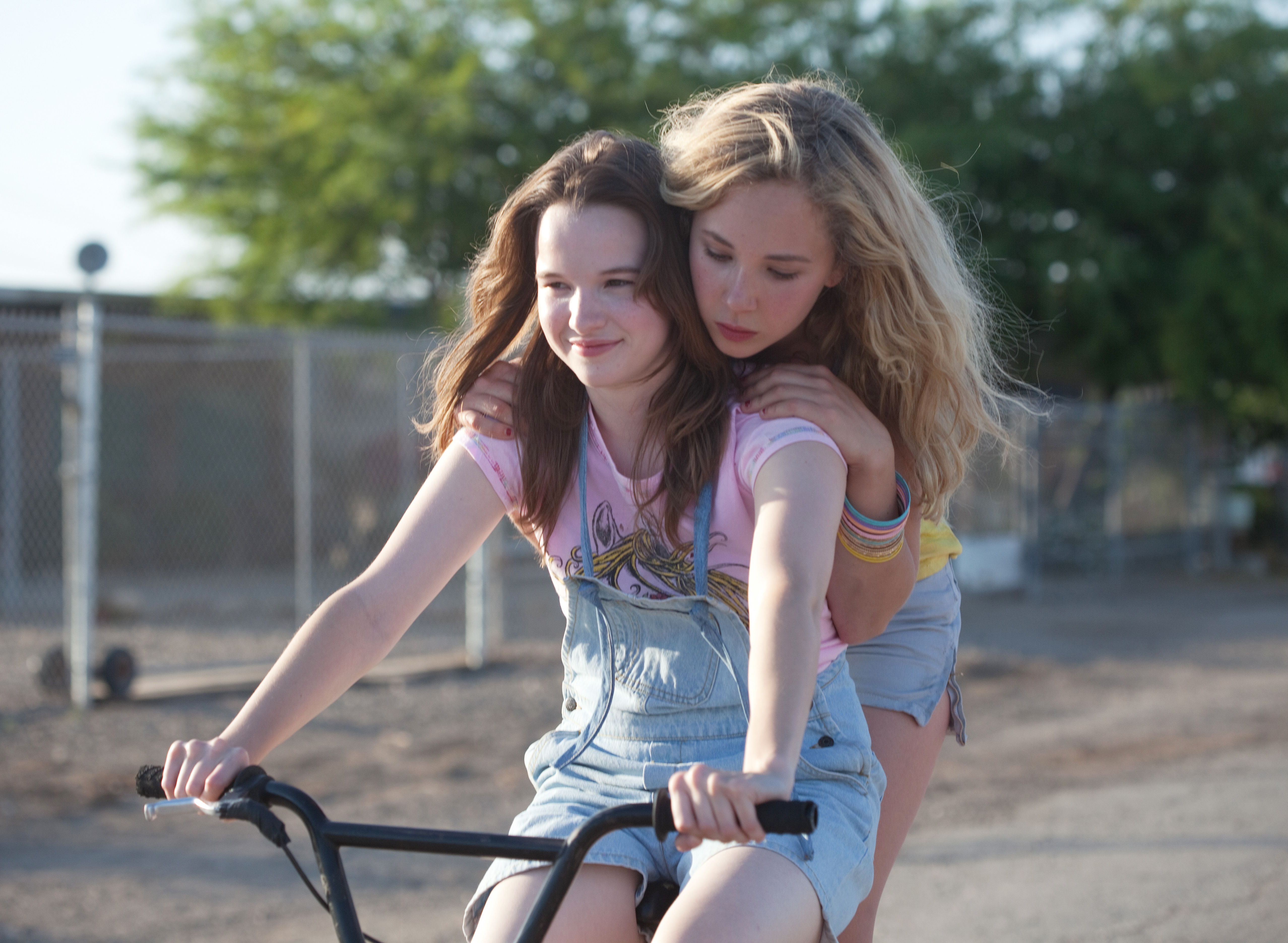Movie Review: "Little Birds"

(Credit: Millenium Entertainment)
Little Birds
Directed by Elgin James
Hunting Lane Films & Polsky Films/ Sundial Pictures
![]()
![]()
![]()
By Lillian Boodaghians
Sept. 17, 2012 7:44 a.m.
The misunderstood teenage girl longing for an escape from her unfulfilling and drab life rears her head yet again in Elgin James’ directorial debut, “Little Birds.” But how many times could this character possibly be explored in movies without completely running her into the ground?
In this “Anywhere But Here” meets “Thirteen” style film, 15-year-old Lily (Juno Temple), the previously mentioned unsatisfied youth, and her best friend Alison (Kay Panabaker), are two adolescent girls who live on the shores of the Salton Sea, in what appears to be a dilapidated trailer park.
Lily is the overly romantic and melodramatic teenager who feels as though she is being suffocated by the world around her. Alison, on the other hand, is the more rational of the two. She accepts her situation and has rooted herself firmly in reality.
Lily’s rebellious behavior drives the storyline. The two girls meet a group of runaway boys from Los Angeles, and Lily becomes infatuated with Jesse (Kyle Gallner), a boy who describes leaving his family as “one less mouth to feed.”
She convinces the skeptical Alison to venture with her to Los Angeles to visit Jesse and his friends. Lily claims that this is the escape she has been searching for.
As expected, the two find themselves in a situation quite distant from what they expected and are forced to learn the harsh truth that settling for what one has is often the best escape possible.
The unfortunate weakness of the film lies in the characterization of Lily and Alison. Though both characters are intended to be complex, they are unoriginal, making it difficult for the viewer to become immersed in what should be a story with great depth and emotional richness.
This lack of character development seems to influence both Temple’s and Panabaker’s performances. Though there are moments in the film where viewers might connect with the characters, neither actress is able to fully hold the viewer’s interest for the entirety of the movie. Often, the performances are superficial, and the girls’ physical gestures do not fully express the emotions of sadness or frustration their characters experience.
What really shines in this movie is the cinematography and the performances of the supporting actors: Leslie Mann, Kate Bosworth and Gallner.
Mann and Bosworth, who play Lily’s mother and aunt respectively, are outstanding in the film. Mann provides Margaret’s character with a rawness that is expected from a mother who struggles to connect with her daughter. Her scenes with Temple are heartbreaking, and the aching her character feels translates perfectly on screen. Mann’s transition into this more dramatic role from her usual comedic characters in films such as “Knocked Up” and “The 40-Year-Old Virgin” is seamless.
Bosworth plays her character with the same honesty. Though she graces the screen for only a couple of minutes, her scenes are memorable. As a woman whose youth has been cut short by the return of her injured husband from war, Bosworth is natural and unpretentious in her portrayal of a character who is forced to bear a greater responsibility than she should have to. Her rough attitude is not only understandable but also believable.
Superior acting ability is also evident in Gallner, who plays Lily’s love interest, another tortured youth. Unlike Temple or Panabaker, he takes an easygoing approach to the character of Jesse, making him the only convincing teenager in the story. When watching Gallner’s performance, it doesn’t come across as overthought or contrived, but instead appeals to the audience in its transparency and genuine sentiment.
The simplicity of the cinematography is key to building interest and adding substance in this film. Whereas the romanticism expressed by Lily’s character is overexaggerated and forced, the romanticism apparent in shots of the ocean, the streets and other landscapes is subtle and much more effective. There is no unnecessary lingering of the camera in “Little Birds” ““ something it seems many directors feel will make a film more meaningful and artistic, when in fact it proves to be immensely distracting.
Had the overused message and characters in “Little Birds” been approached with greater creativity, the film could have been far more interesting. Though it is not a regrettable watch, “Little Birds,” does not break from its predetermined niche ““ a theme that is, ironically, stressed so desperately throughout the film.
““ Lillian Boodaghians
Email Boodaghians at [email protected].


